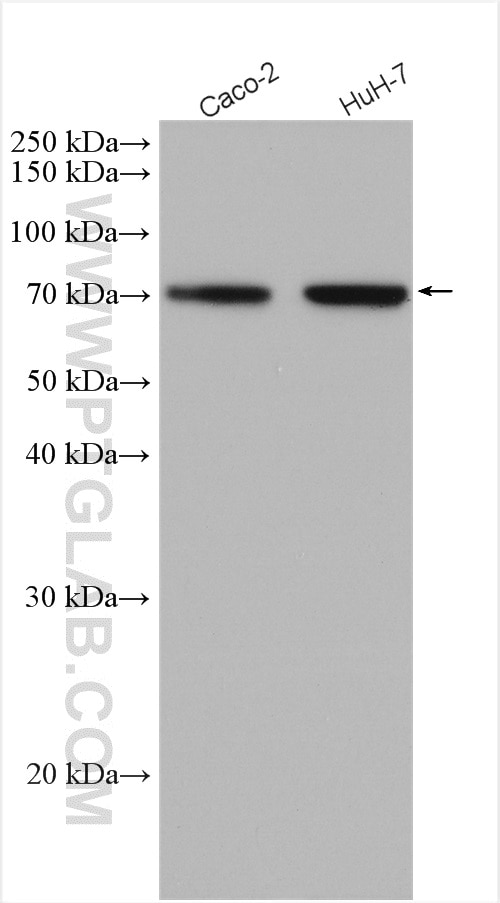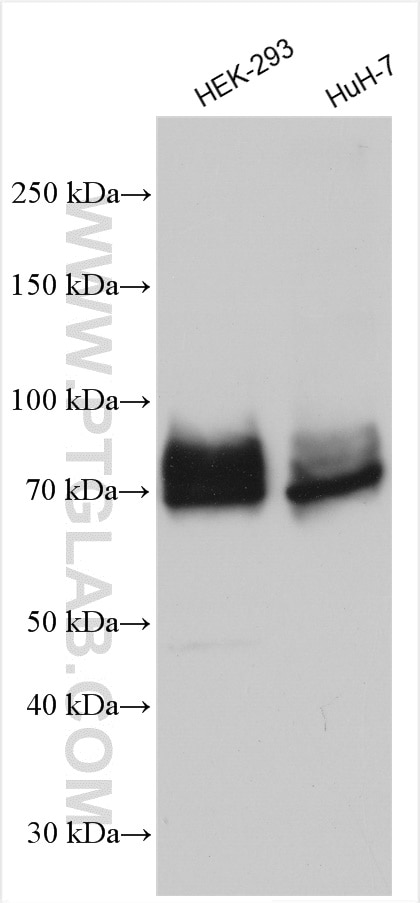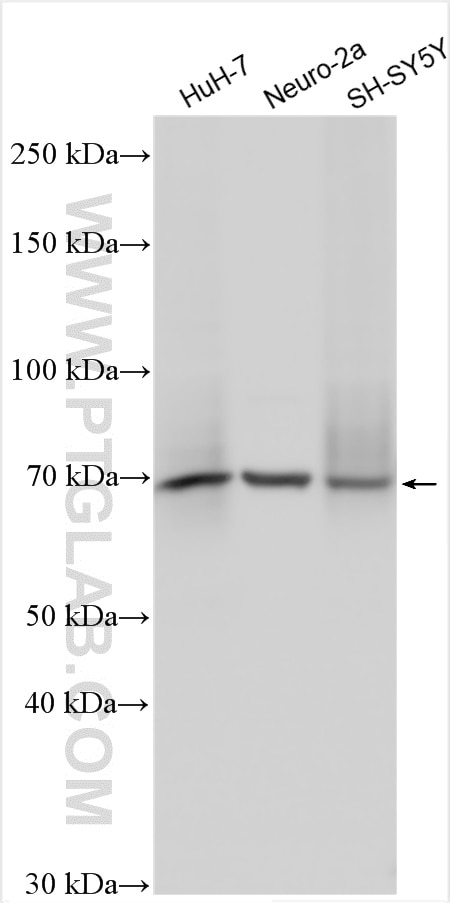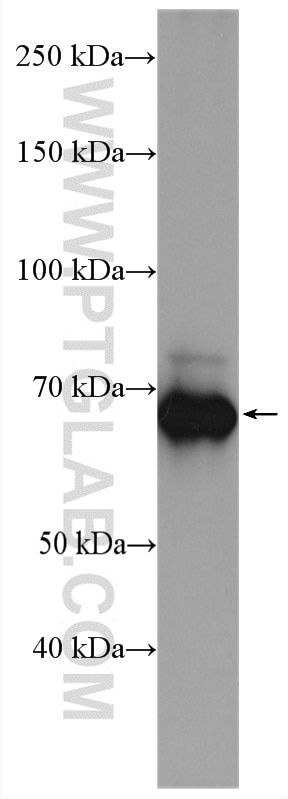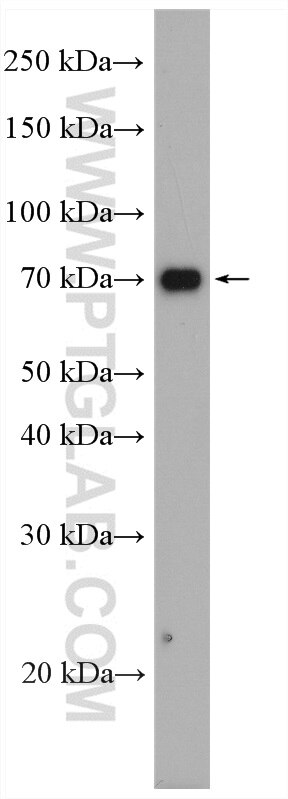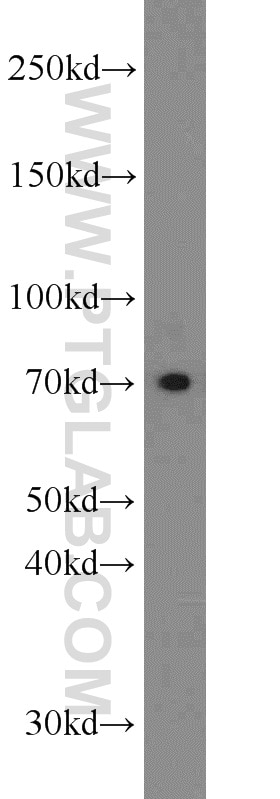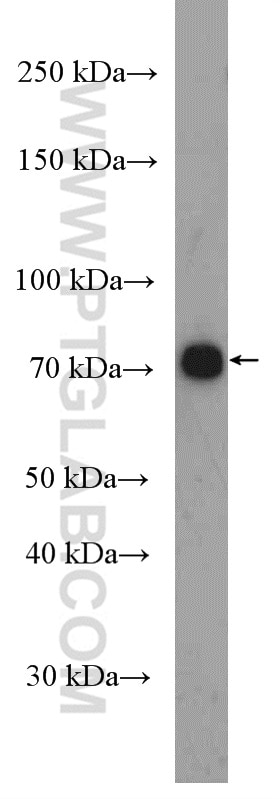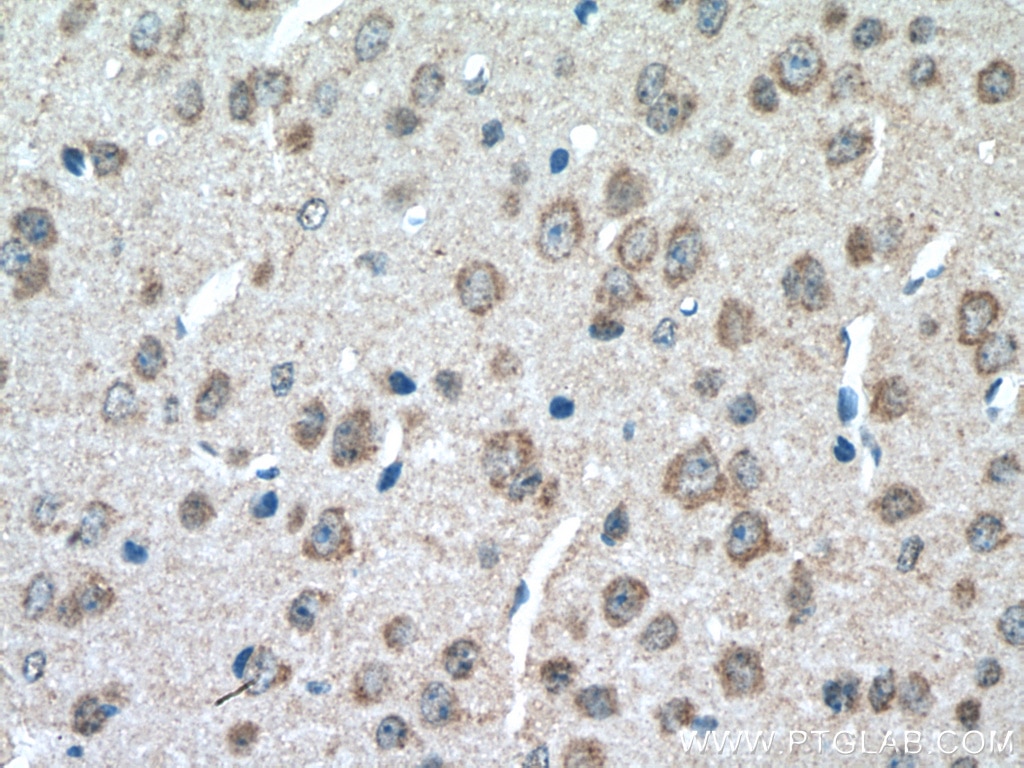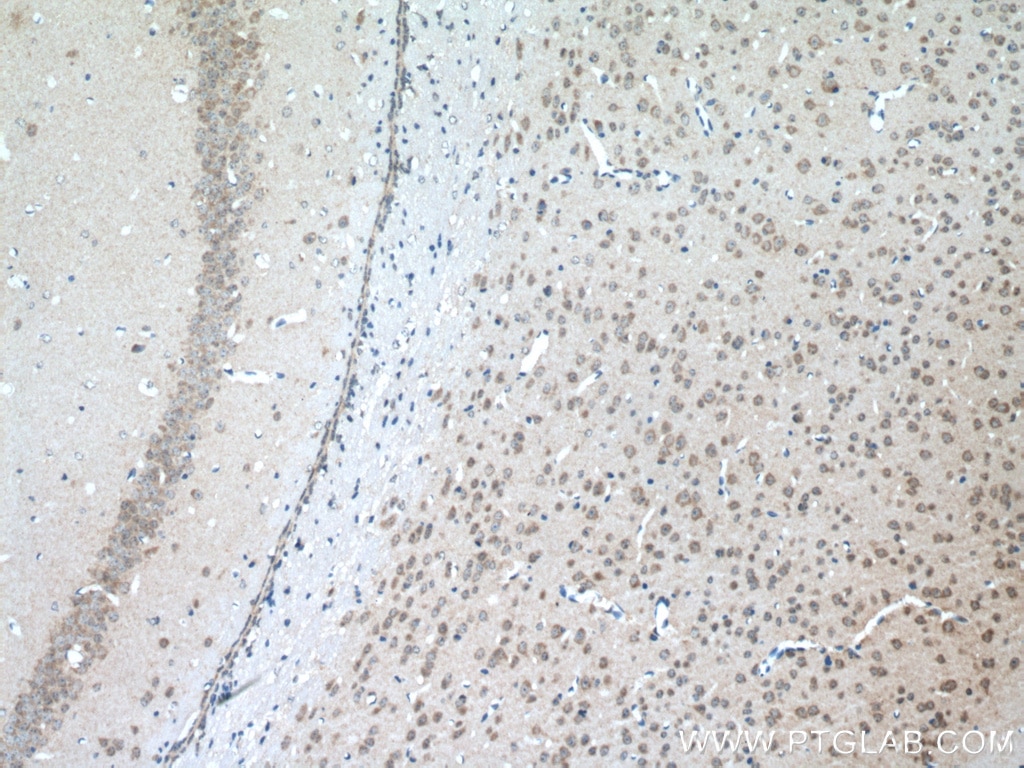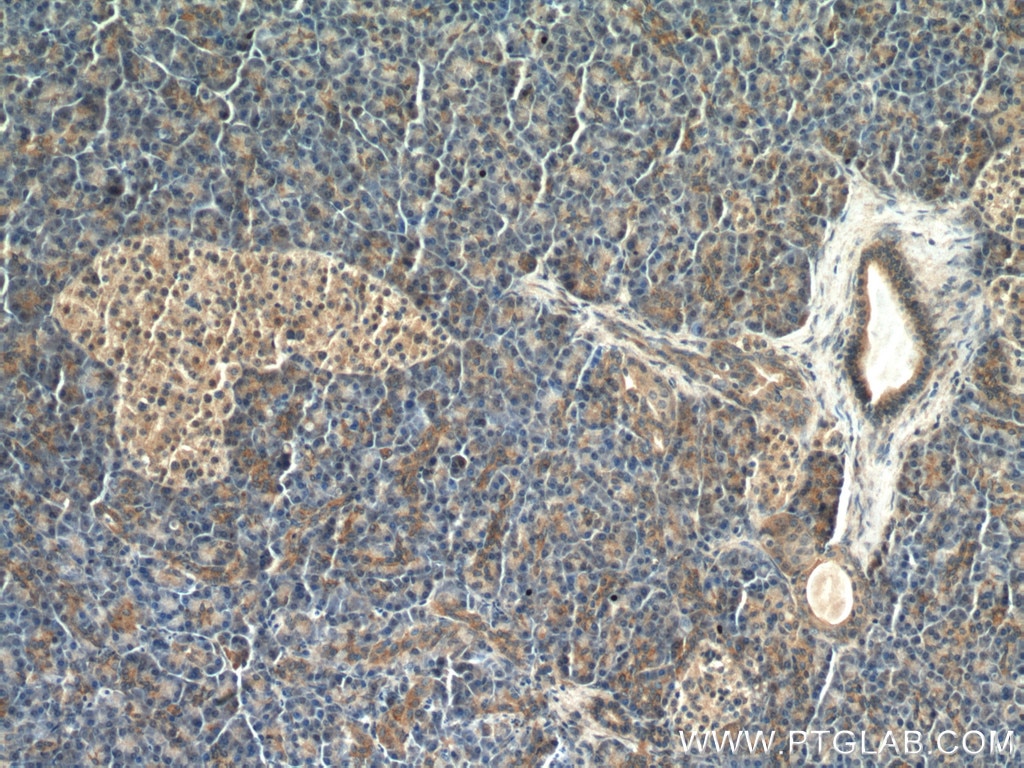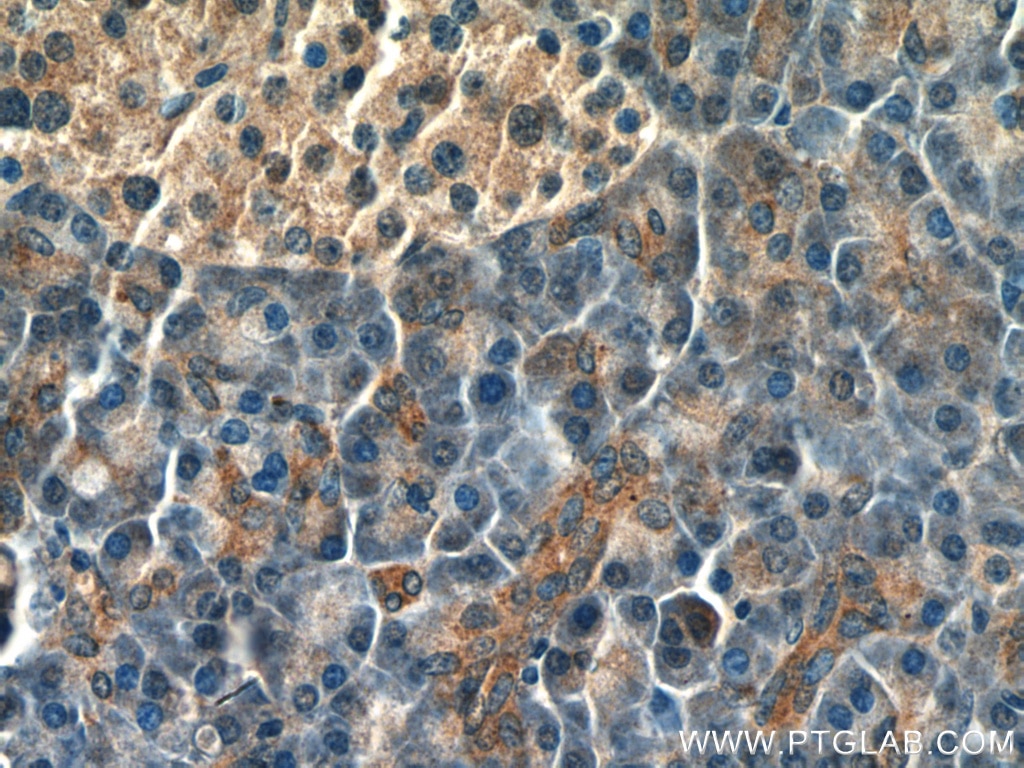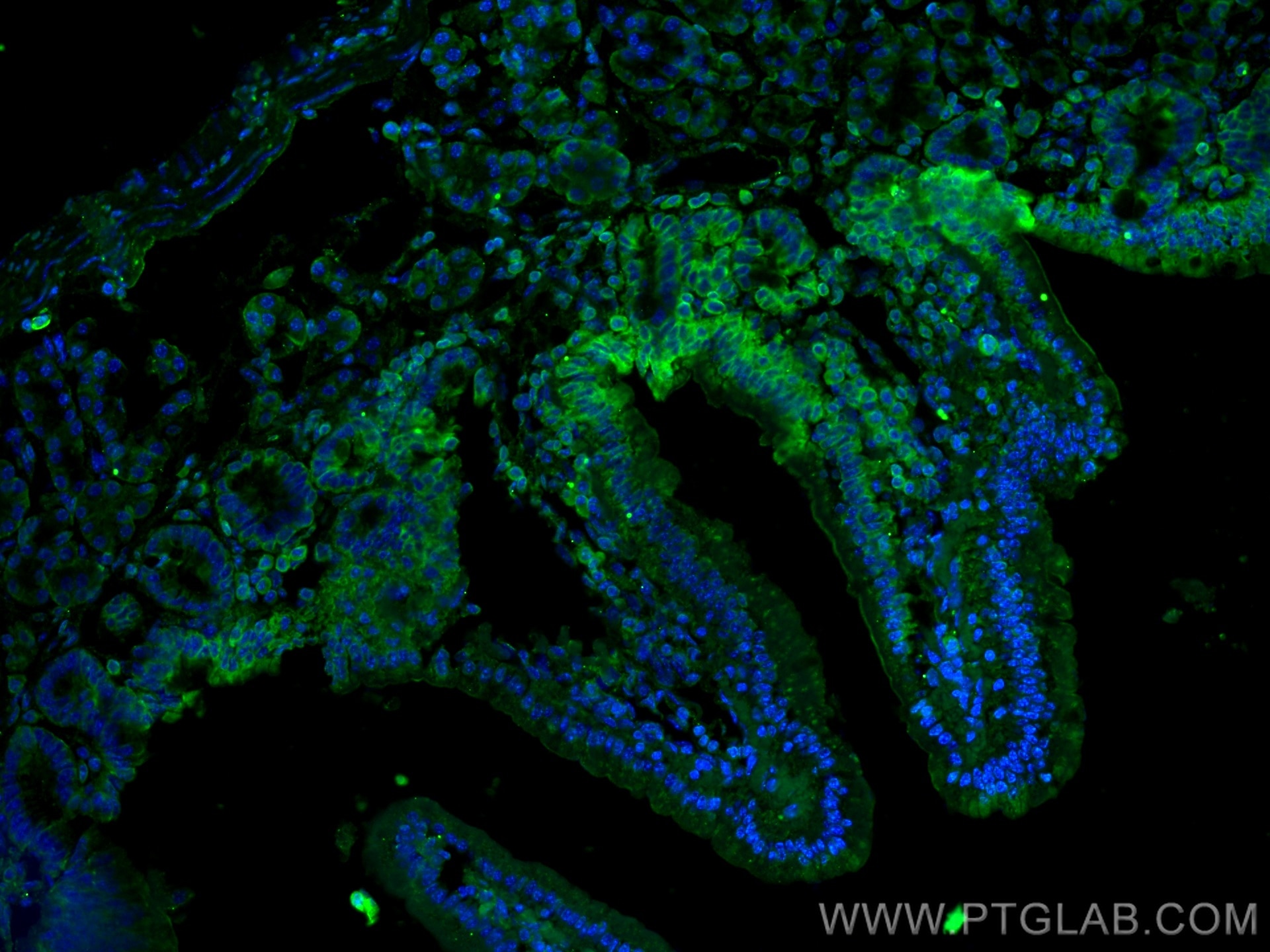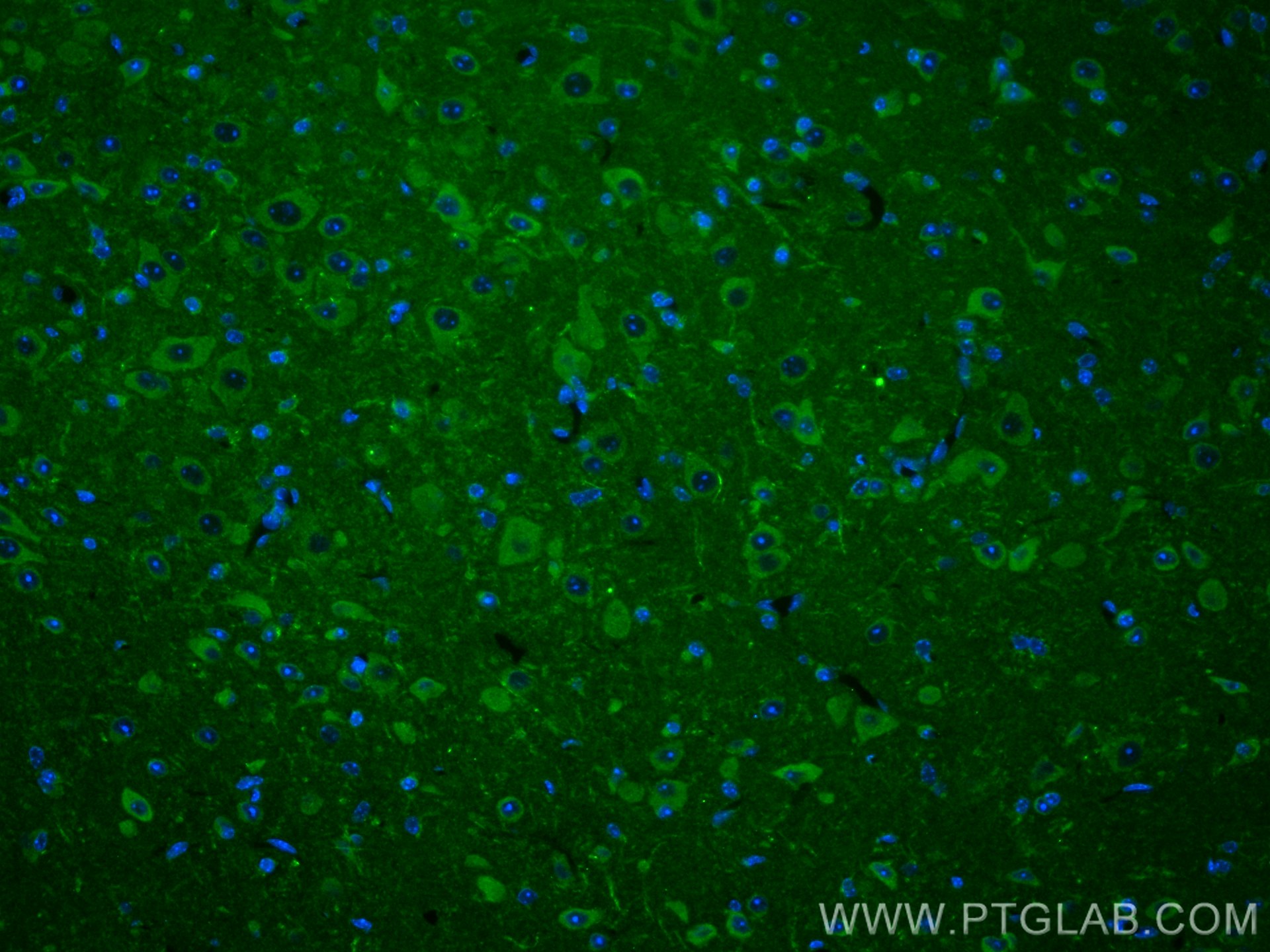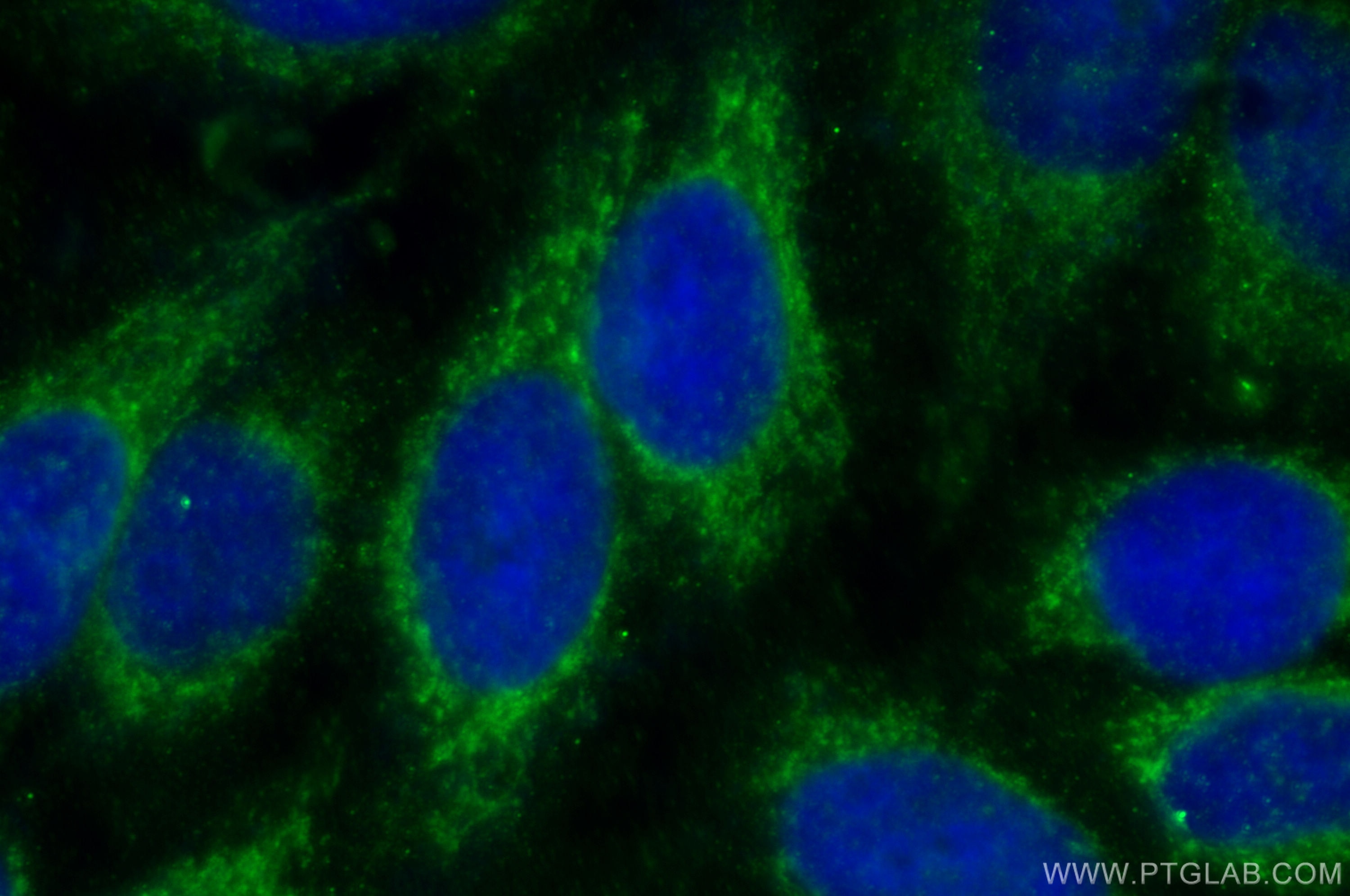- Phare
- Validé par KD/KO
Anticorps Polyclonal de lapin anti-DMT1
DMT1 Polyclonal Antibody for WB, IHC, IF/ICC, IF-P, ELISA
Hôte / Isotype
Lapin / IgG
Réactivité testée
Humain, rat, souris et plus (3)
Applications
WB, IHC, IF/ICC, IF-P, ELISA
Conjugaison
Non conjugué
N° de cat : 20507-1-AP
Synonymes
Galerie de données de validation
Applications testées
| Résultats positifs en WB | cellules HuH-7, cellules Caco-2, cellules COLO 320, cellules Neuro-2a, cellules SH-SY5Y, tissu rénal de rat |
| Résultats positifs en IHC | tissu cérébral de souris, tissu pancréatique humain il est suggéré de démasquer l'antigène avec un tampon de TE buffer pH 9.0; (*) À défaut, 'le démasquage de l'antigène peut être 'effectué avec un tampon citrate pH 6,0. |
| Résultats positifs en IF-P | tissu d'intestin grêle de souris, tissu cérébral de souris |
| Résultats positifs en IF/ICC | cellules HepG2, |
Dilution recommandée
| Application | Dilution |
|---|---|
| Western Blot (WB) | WB : 1:1000-1:4000 |
| Immunohistochimie (IHC) | IHC : 1:50-1:500 |
| Immunofluorescence (IF)-P | IF-P : 1:400-1:1600 |
| Immunofluorescence (IF)/ICC | IF/ICC : 1:200-1:800 |
| It is recommended that this reagent should be titrated in each testing system to obtain optimal results. | |
| Sample-dependent, check data in validation data gallery | |
Applications publiées
| KD/KO | See 5 publications below |
| WB | See 100 publications below |
| IHC | See 7 publications below |
| IF | See 8 publications below |
Informations sur le produit
20507-1-AP cible DMT1 dans les applications de WB, IHC, IF/ICC, IF-P, ELISA et montre une réactivité avec des échantillons Humain, rat, souris
| Réactivité | Humain, rat, souris |
| Réactivité citée | rat, bovin, Humain, porc, poulet, souris |
| Hôte / Isotype | Lapin / IgG |
| Clonalité | Polyclonal |
| Type | Anticorps |
| Immunogène | DMT1 Protéine recombinante Ag14314 |
| Nom complet | solute carrier family 11 (proton-coupled divalent metal ion transporters), member 2 |
| Masse moléculaire calculée | 568 aa, 62 kDa |
| Poids moléculaire observé | 60-70 kDa |
| Numéro d’acquisition GenBank | BC002592 |
| Symbole du gène | DMT1 |
| Identification du gène (NCBI) | 4891 |
| Conjugaison | Non conjugué |
| Forme | Liquide |
| Méthode de purification | Purification par affinité contre l'antigène |
| Tampon de stockage | PBS with 0.02% sodium azide and 50% glycerol |
| Conditions de stockage | Stocker à -20°C. Stable pendant un an après l'expédition. L'aliquotage n'est pas nécessaire pour le stockage à -20oC Les 20ul contiennent 0,1% de BSA. |
Informations générales
SLC11A2 (also known as DMT1, Nramp2, and DCT1) is a member of the divalent cation transporters that play a central role in iron homeostasis. SLC11A2 is widely expressed in many tissues including the brain, kidney, testis, duodenum, and placenta. As a membrane protein, SLC11A2 is localized on the apical membrane of enterocytes as well as in transferrin-cycle endosomes. Four isoforms of SLC11A2 exist due to the alternative splicing. They differ at the NH2 and COOH termini but share a common central domain. A variety of molecular weights of SLC11A2 in western blot analysis, ranging from 50 to 100 kDa, has been reported in different cells and species. The differences in molecular weights may be attributed to the level of glycosylation, proteolysis, or the membrane protein itself. This antibody detected various forms of SLC11A2 of 45-100 kDa.
Protocole
| Product Specific Protocols | |
|---|---|
| WB protocol for DMT1 antibody 20507-1-AP | Download protocol |
| IHC protocol for DMT1 antibody 20507-1-AP | Download protocol |
| IF protocol for DMT1 antibody 20507-1-AP | Download protocol |
| Standard Protocols | |
|---|---|
| Click here to view our Standard Protocols |
Publications
| Species | Application | Title |
|---|---|---|
Blood Defective palmitoylation of transferrin receptor triggers iron overload in Friedreich ataxia fibroblasts. | ||
Acta Neuropathol Seizure-mediated iron accumulation and dysregulated iron metabolism after status epilepticus and in temporal lobe epilepsy. | ||
Mol Cell Maintaining Iron Homeostasis Is the Key Role of Lysosomal Acidity for Cell Proliferation. | ||
J Hazard Mater Investigating the potential risk of cadmium exposure on seizure severity and anxiety-like behaviors through the ferroptosis pathway in epileptic mice: An integrated multi-omics approach | ||
Nat Commun Wipi3 is essential for alternative autophagy and its loss causes neurodegeneration. |
